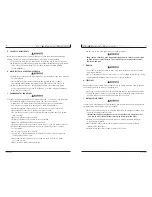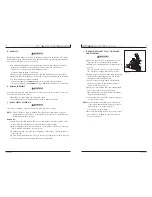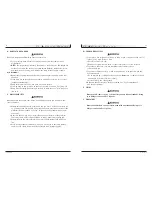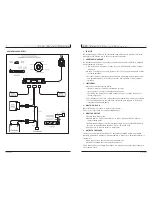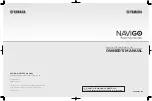
930466 Rev. A
X I . B a t t e r i e s
43
A. INTRODUCTION
1. Notes–
• Batteries supply the power for your chair. They contain a finite amount of
energy and have limits on how long they can store and supply energy.
• You can charge batteries only a certain number of times before they will fail and
no longer hold a charge.
• For answers to questions about batteries, consult your supplier.
2. Use Proper Batteries:
Your chair operates on two 12 volt batteries.
• They should be Group 24 size with a minimum of 65 ampere hour rating. Only
deep cycle sealed case
construction batteries should be used in this device.
• Connecting configuration. They should have a post and clamp style connection.
• When you buy a replacement, insist on a
deep cycle sealed case
type. Do not
use a car starter battery.
3. Breaking In:
• A battery requires “breaking-in” for the first 6 to 12 charges. It will not accept a
full charge for this period.
• It is best to limit the length of your trips until you break the batteries in
and you know the range of your chair.
4. Discharged Batteries:
•
Never
allow a battery to completely discharge. If you operate your wheelchair
until it has almost stopped, you will greatly reduce the life of your batteries.
•
Never
let a battery sit in a discharged condition. Give unused or stored batteries
a full charge once per month.
•
Always
fully charge the batteries.
Avoid
“topping off” with frequent charges.
Never connect a life support or auxiliary device to a wheelchair battery.
The electrical system may fail, and result in severe injury to or death of rider.
X . O p e r a t i n g G u i d e
930466 Rev. A
42
F.
MOTOR LOCKS
Disconnect the motor locks when you need to manually
push the chair. (For example, in an emergency,
or if batteries fail).
1. Do not disengage motor locks unless power to
the chair is off.
2. With the brakes released, the chair will not
operate and the battery charge indicator will
flash 9 bars rapidly (if power to the chair is on).
3. Be aware that the chair will not have brakes
in the free-wheel position.
4. Make sure that the person pushing the chair has
full control when motor locks are disengaged.
1. To Disengage Motor Locks:
Lift the lever (A) to the free-wheel position.
2. To Engage Motor Locks:
Push the lever (A) down into the drive position.
A
Summary of Contents for Quickie P-222
Page 28: ...N o t e s 930466 Rev A 54...

